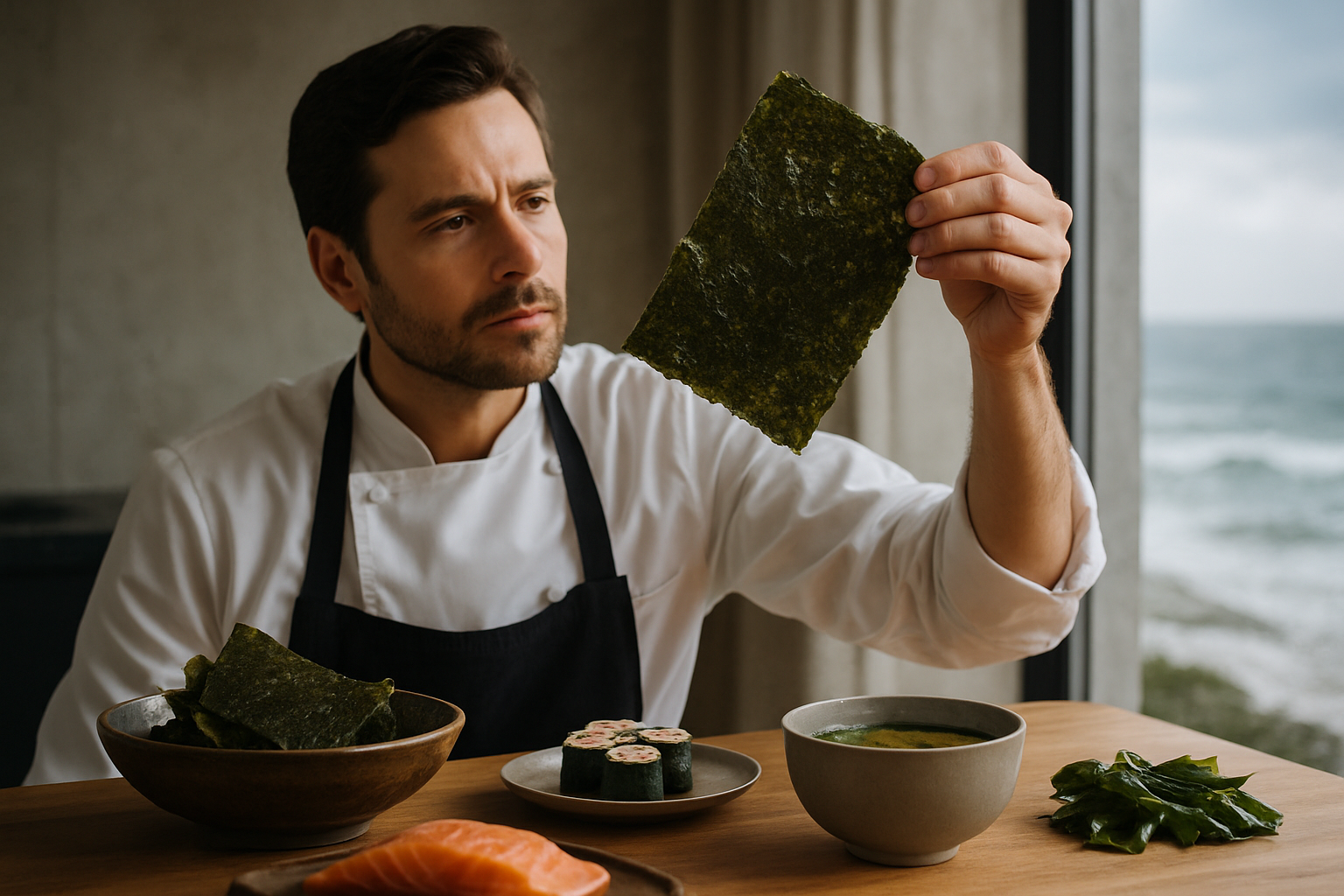Umami-Packed Delights: Exploring the World of Seaweed Cuisine
Dive into the ocean's culinary treasures as we explore the diverse and flavorful world of seaweed cuisine. From traditional Asian dishes to innovative Western creations, seaweed is making waves in kitchens worldwide. Discover how this nutrient-rich superfood is transforming menus and tantalizing taste buds with its unique umami flavor profile.

Seaweed Varieties and Their Culinary Uses
The world of edible seaweed is vast and varied, with each type offering its own distinct flavor and texture. Nori, the dark sheets used to wrap sushi, has a mild, slightly sweet taste that complements rice and fish perfectly. Kombu, a type of kelp, is often used to make dashi, the umami-rich stock that forms the base of many Japanese dishes. Wakame, with its delicate texture and subtle sweetness, is a popular addition to salads and soups. Dulse, a red seaweed native to the Atlantic and Pacific coasts, has a savory, almost bacon-like flavor when pan-fried. Irish moss, also known as carrageen, is used as a thickening agent in desserts and drinks. Each variety brings its own unique properties to the table, allowing for endless culinary experimentation.
Innovative Seaweed Dishes from Around the World
Chefs worldwide are pushing the boundaries of seaweed cuisine, creating innovative dishes that showcase its versatility. In high-end restaurants, you might find seaweed butter served alongside artisanal bread, adding a briny depth to the classic appetizer. Seaweed pesto, made with dulse or nori, offers a marine twist on the Italian favorite. Some adventurous ice cream makers are even incorporating seaweed into their frozen treats, creating flavors like salted caramel and nori. In the realm of snack foods, seaweed chips and crackers are gaining popularity as a healthier alternative to traditional potato chips. These crispy treats offer a satisfying crunch and a burst of umami flavor. Even in the world of mixology, seaweed is making an appearance, with innovative bartenders using it to infuse spirits or garnish cocktails for a unique oceanic touch.
The Nutritional Powerhouse of the Sea
Seaweed isn’t just delicious; it’s also incredibly nutritious. Packed with vitamins, minerals, and antioxidants, seaweed is often referred to as a superfood. It’s an excellent source of iodine, which is essential for thyroid function and metabolism. Many seaweeds are rich in iron, calcium, and magnesium, making them a valuable addition to vegetarian and vegan diets. They’re also high in fiber, which aids digestion and promotes feelings of fullness. Some varieties, like nori, contain significant amounts of vitamin B12, a nutrient often lacking in plant-based diets. Additionally, seaweed is low in calories but high in flavor, making it an ideal ingredient for those looking to enhance their meals without adding excess fat or sugar.
Sustainable Seaweed Farming and Its Environmental Impact
As the demand for seaweed grows, so does the importance of sustainable farming practices. Seaweed aquaculture is considered one of the most environmentally friendly forms of food production. Unlike land-based agriculture, seaweed farming requires no fresh water, fertilizers, or pesticides. In fact, seaweed farms can have a positive impact on marine ecosystems by absorbing excess nutrients from the water and providing habitat for marine life. They also play a role in carbon sequestration, helping to mitigate climate change. As consumers become more environmentally conscious, the sustainable nature of seaweed production is likely to further boost its popularity. However, it’s crucial that as the industry grows, it maintains responsible practices to ensure the long-term health of our oceans.
Seaweed Cuisine Tips & Facts
-
Toast nori sheets lightly before use to enhance their flavor and crispness
-
Soak dried seaweed in water before adding to salads or soups for better texture
-
Experiment with seaweed flakes as a healthier alternative to salt in your cooking
-
Try adding crumbled nori to popcorn for a unique umami-rich snack
-
Seaweed pairs well with avocado, creating a perfect balance of creamy and briny flavors
-
Some seaweeds, like dulse, can be eaten raw straight from the package as a snack
-
Kombu added to beans while cooking can help reduce gas-causing compounds
In conclusion, seaweed cuisine offers a world of culinary possibilities waiting to be explored. From its rich umami flavor to its impressive nutritional profile and sustainability, seaweed is poised to become a staple in kitchens around the globe. As we continue to seek out new flavors and more sustainable food sources, this versatile sea vegetable is sure to play an increasingly important role in the future of gastronomy. So why not dive in and add a touch of oceanic flavor to your next meal? The world of seaweed cuisine is yours to discover.





